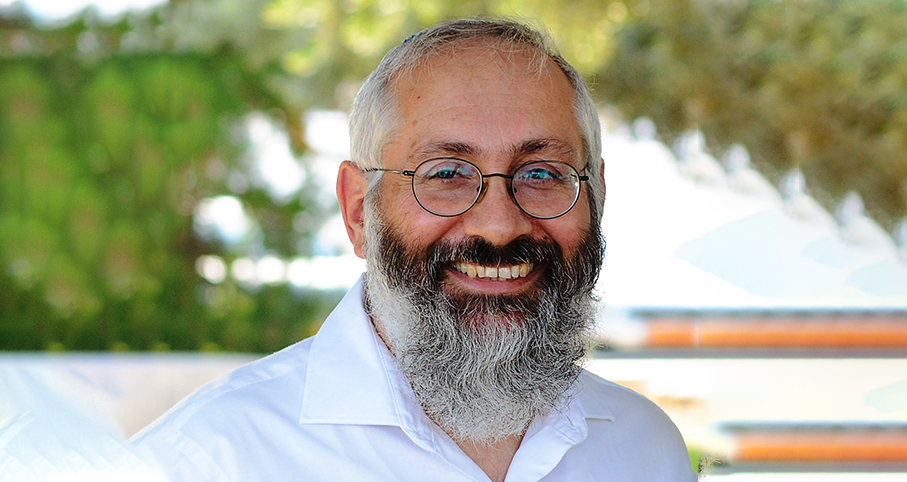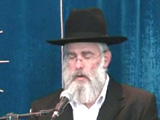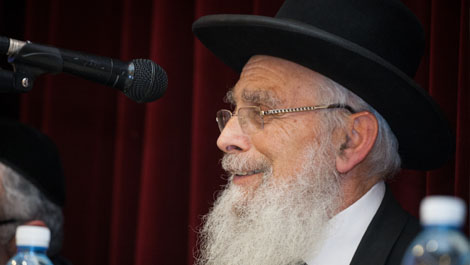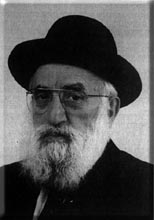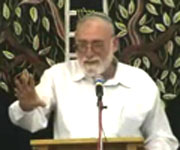Beit Midrash
- Torah Portion and Tanach
- Vayikra
- Vayikra
Vayikra opens with the following verse: "And God called to Moshe, and spoke to him out of the Tent of Meeting, saying, Speak to the people of Israel, and say to them, If any man of you brings an offering to the Lord, you shall bring your offering of the cattle, of the herd, and of the flock." Now, this verse is a direct continuation of the verse that concludes our previous book, Shmot. "And it was in the first month, in the second year, on the first of the month, that the Mishkan (Tabernacle) was established. The cloud enveloped the Tent of the Meeting and God's glory filled the Mishkan . Moshe could not enter the Tent since the cloud was resting on it and since God's glory was filling the Mishkan.. the cloud of God rested on the Mishkan by day, and a fire by night, visible to the Children of Israel in the course of all of their travels..."
The Book of Shmot ends with the completion of the building of the Mishkan, during which God's glory came to rest on the Mishkan, and Moshe could "not therefore not enter the Tent of the Meeting." Vayikra opens with God calling to Moshe from the Tent of the Meeting.
How are we to understand the transition between these two books of the Torah?
The dedication of the Mishkan is described in the Torah on two occasions: once in Vayikra and once more in Bamidbar (Numbers) - but the two references differ greatly: In Vayikra, we learn of the seven days of the in which the sons of Aharon, the Cohen Gadol (High Priest) trained in the Mishkan. These days featured a special service, both in terms of the sacrifices brought, and in terms of the other activities associated with the preparation of Aharon's sons for their positions. The week-long training period ends with the Shechina (Divine Presence) remaining in the Mikdash: "And Moshe and Aharon went into the Tent of Meeting, and came out, and blessed the people; and the glory of God appeared to all the people. And there came a fire out from before God, and consumed upon the altar the burnt offering and the fat; which when all the people saw, they shouted, and prostrated themselves." (Vayikra 9:23)
On the eighth day, a fire descended from Heaven, as an expression of the settling in of the Shechina . Immediately thereafter, the Mishkan was sanctified by a traumatic event also associated with the descent of the fire from Heaven:
"And Nadav and Avihu, the sons of Aharon, took each of them his censer, and
put fire in it, and put incense on it, and offered strange fire before God, which
He commanded them not. And there went out fire from God, and devoured them, and they died before the Lord. Then Moshe said to Aharon, This is what the Lord spoke, saying, I will be sanctified in them that come near to Me, and before all the people I will be glorified. And Aharon was silent." (Vayikra 10, 1-3)
As we already mentioned, the dedication of the Mishkan also appears in Sefer Bamidbar, but in a different context: "And it came to pass on the day that Moshe had finished setting up the Mishkan, and had anointed it, and sanctified it, and all its instruments, both the altar and all its utensils, and had anointed them, and sanctified them; That the princes of Israel, chiefs of the house of their fathers, who were the princes of the tribes, and who were over them who were counted, offered; And they brought their offering before the Lord, six covered wagons, and twelve oxen; a wagon for two of the princes, and for each one an ox; and they brought them before the Mishkan." (Bamidbar 7, 1-3,10)
What is the relationship between these two accounts? The differences appear to be so significant, that it seems that the Torah is speaking of two completely unrelated events!
The answer to this question rests in the relationship between these two books - Vayikra and Bamidbar.
The Book of Shmot dwells on the creation of the Jewish people. God plucked one nation (Israel) from the midst of another, extricated them from the impurity of Egypt, and transported them in a "time tunnel" to an event that some thought several light years away - to the giving of the Torah at Mt. Sinai. "And Israel encamped there next to the Mountain." (Shmot 19) Rashi comments: "As one man with one heart."
The next stage of Sefer Shmot involves the construction of the Mishkan: "They shall make a Mikdash for me and I will come to dwell in them." The formation of the People of Israel into a nation requires the resting of the Shechina in the midst of the Jewish camp. The Mishkan thus becomes the physical "home" of God.
Sefer Vayikra is dubbed by our sages, "Torat Cohanim." The volume largely deals with the halachot (laws) of the Cohanim (Priests) and introduces other halachot dealing with the Beit Hamikdash and associated vessels. Even the sections of Vayikra that don't deal with service in the Temple directly, do so indirectly.
In Sefer Bamidbar, it is not the Cohanim, but the people themselves and their messengers - the Levi'im - who are in the spotlight. The book opens with ten chapters describing the Jewish communal camp, as well as the nation's travellings - accompanied all the time by the Shechina. The rest of the book details the various spiritual obstacles over which the Children of Israel stumbled in the desert.
The focus of the book of Vayikra is the indwelling of the Divine Presence in the Mikdash; this does not only have implications for life inside the Mikdash - for the Cohanim, for instance - but also impacts on life outside the Mikdash. Thus, Vayikra also deals with halachot and customs that apply outside the Temple. In Parshat B'Chukotai, for instance, the nation is given harsh reproof, and the punishment God pledges should the people stray from the proper path is described in great depth.
But the Mikdash also plays a role in that Torah portion. "If you behave according to My statutes," then, "I will place my Mishkan among you and I will not reject you." (Vayikra 26:11) Hashem promises, that should He fully implement his punishment, He will "make your cities desolate and destroy My Mikdash." Walking in Hashem's ways moves us forward: we build the physical vessels, gather in the crops and harvest, we work towards the goal, towards the heart of the entire process - the goal of having God's Mishkan dwell in our midst. Misbehavior leads to a further downward spiral, ending in the ultimate destruction of the Temple, and the exile. Sefer Vayikra expresses a perspective on reality from the eyes of the Mikdash, with the main axis of service in the Mikdash being the service of the Cohanim. The central tool is the altar, which, when used for the service, returns life to its source, and permits the descent of the fire from Heaven, and the insetting of "I will place my Mishkan in your midst."
Sefer Bamidbar, on the other hand, concentrates on the building of the nation, the arrangement of the respective powers - each tribe and each Jewish person in his place and proper position. Together, these two books teach us that the plight of the Nation of Israel is connected intimately with the "plight" of the Shechina. The travellings of Israel are, in effect, the travellings of the Shechina.


